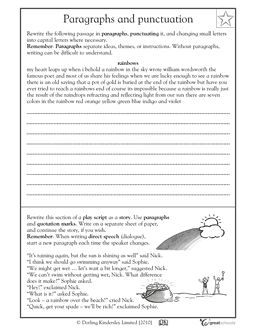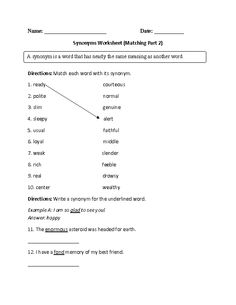Quotations 4th Grade Worksheet
Are you searching for engaging and educational resources to reinforce your 4th grade student's understanding of quotations? Look no further! Our Quotations 4th Grade Worksheet is designed to introduce and practice the concept of using quotation marks with clear and concise subject matter. Suitable for both classroom and homeschool environments, this worksheet is a valuable tool for helping young learners enhance their writing and communication skills.
Table of Images 👆
More 4th Grade Worksheets
4th Grade Elapsed Time WorksheetsIrregular Plural Worksheets 4th Grade
Rotational Symmetry Worksheets 4th Grade
Simple Circuit Worksheets 4th Grade
Long Division with Remainders Worksheets 4th Grade
Fourth Grade Reading Comp Worksheets
Reading Response Worksheets 4th Grade
4th Grade Essay Writing Worksheets
Worksheets 4th Grade Narrative Writing
Long Lined Paper Worksheets 4th Grade Essay-Writing
What is a quotation?
A quotation is a statement from a text or speech that is repeated by someone else with acknowledgment to its original source, often used to emphasize a point, provide evidence, or add authority to a particular belief or argument.
What are quotation marks used for?
Quotation marks are used to indicate that the enclosed text is a direct quotation or dialogue spoken by someone else. They can also be used to highlight the titles of shorter works such as articles, poems, and chapters, as well as to emphasize specific words or phrases within a sentence.
How do you properly punctuate a quotation?
To properly punctuate a quotation, you should use quotation marks at the beginning and end of the quoted text. If the quote is a part of a larger sentence, place a comma before the opening quotation mark. If the quote ends with a period or comma, place the punctuation inside the quotation marks. For question marks and exclamation points, the placement depends on whether they are part of the original quote or the overall sentence.
What is the purpose of using quotations?
The purpose of using quotations is to provide evidence, support or emphasize a particular point or idea by directly quoting the words of someone else. Quotations help to add credibility, authority, and clarity to your writing by showing that the information or perspective being presented is coming from a specific source. Additionally, quotations can also help to avoid plagiarism by properly attributing ideas or information to their original authors.
When should you use single quotation marks instead of double quotation marks?
Single quotation marks should be used within double quotation marks when a quote is nested within another quote. For example, "She said, 'I love that movie.'" Additionally, single quotation marks are used in British English when quoting someone's speech or words within a sentence that is already enclosed in double quotation marks, for example, 'He shouted, "Get out of here!"'.
How can you indicate that words within a quotation have been omitted?
To indicate that words within a quotation have been omitted, you can use an ellipsis (...) to show where words have been removed. The ellipsis should have a space before and after it when used in a sentence. This shows that there is missing text in the original quotation but retains the integrity of the writer's original words.
What is a direct quotation?
A direct quotation is when you repeat another person's exact words verbatim without changing or altering them. It is enclosed in quotation marks and attributed to the original speaker or writer.
What is an indirect quotation?
An indirect quotation is when the speaker paraphrases or summarizes someone else's words without using the exact wording but still conveying the original meaning. This type of quotation does not require quotation marks but should still clearly attribute the statement to its original source.
How do you introduce a quotation in your writing?
To introduce a quotation in your writing, you can provide context for the quote by explaining its relevance to your argument or topic. You can also use phrases such as "According to," "In the words of," or "As stated by" followed by the author's name or source of the quote. Additionally, be sure to punctuate and format the quote correctly within your writing to indicate that it is someone else's words being cited.
Why is it important to properly attribute quotations to their original source?
Properly attributing quotations to their original source is important for ensuring intellectual honesty, acknowledging the contributions of others, and maintaining credibility. It helps to give credit to the original author for their work, prevents potential plagiarism, and allows readers to verify the accuracy and context of the information being shared. Failures to provide proper attribution can lead to legal issues, ethical concerns, and undermine the trustworthiness and integrity of the individual or organization using the quotes.
Have something to share?
Who is Worksheeto?
At Worksheeto, we are committed to delivering an extensive and varied portfolio of superior quality worksheets, designed to address the educational demands of students, educators, and parents.





































Comments